- Join the Top Full Stack Training Institute in Coimbatore to Develop Programming Skills.
- Full Stack Course in Coimbatore – Learn Frontend, Backend, Databases & MongoDB.
- Build Real-World Experience with Live Projects and Interactive Practical Training.
- Flexible Scheduling Options – Choose Weekday, Weekend, or Fast-Track Batches.
- Career-Oriented Full Stack Certification Program in Coimbatore with Placement Assistance.
- Receive Support for Resume Building, Interview Preparation, and Career Development.
Join Our 100% Job Guaranteed
Full Stack Developer Course in Coimbatore
WANT IT JOB
Become a Full Stack Developer in 3 Months
Freshers Salary
3 LPA
To8 LPA
Quality Training With Affordable Fees in Coimbatore!
11542+
(Placed)4669+
(Placed)8110+
(Placed)4520+
(Placed)Our Hiring Partners




Overview of Full Stack Course in Coimbatore
The Full Stack Developer Course in Coimbatore equips you with the skills to create fully functional websites and web applications. You'll master both frontend and backend development using technologies like HTML, CSS, JavaScript, React, Node.js, and various databases. Designed with beginners in mind, this course requires no prior coding experience. By the end of the training, you'll be prepared to launch your career in web development. Start your journey today with the Full Stack Developer Training in Coimbatore.
What You'll Learn From Full Stack Training
The Full Stack Developer Course in Offline is ideal for both beginners and professionals looking to build complete web development skills from scratch.
You'll learn key technologies like HTML, CSS, JavaScript, React, Node.js, Express, and MongoDB to develop both frontend and backend applications.
Our course focuses on real-world projects and business scenarios to help you build responsive websites and dynamic web apps.
With hands-on, classroom-based training led by industry experts, you'll gain the confidence to work on real-time development tasks.
By the end of the course, you'll master full stack development best practices and receive a recognized certification.
This offline course equips you for high-demand roles in software development, web engineering, and tech startups.
Additional Info
Course Highlights
- Choose Your Path: Java Full Stack, Python Full Stack, MEAN Stack, or MERN Stack
- Unlock job placement opportunities with top MNCs.
- Join over 11,462 trained learners and benefit from connections with 350+ hiring partners.
- Get expert-led Full Stack Developer training with dedicated placement support.
- Access an industry-relevant curriculum at affordable prices with 100% job assistance.
- Accelerate your Full Stack Developer journey through hands-on, interactive learning.
- Learn from seasoned professionals with 10+ years of real-world experience.
Exploring the Benefits of Full Stack Course
- Informed Development Approach: Informed Development Approach: A full stack development course equips you to understand and manage both frontend and backend technologies. With hands-on experience in real-world projects, you'll learn to create efficient, scalable, and user-friendly solutions, reducing trial-and-error and increasing development speed.
- High Demand Career Opportunities: Skills in full-stack development are highly sought after across various industries, including fintech, edtech, and e-commerce. The course prepares students for positions as Frontend/Backend Developers, Software Engineers, Web Developers, and Full Stack Developers.
- Boost in Project and Team Efficiency: By mastering both client-side and server-side technologies, you become a valuable asset to any development team. You'll be able to contribute to multiple stages of a project, from UI design to database management, streamlining communication and improving project outcomes.
- Enhanced Problem-Solving and Technical Skills: The course develops your logical thinking, coding abilities, and problem-solving mindset. You'll learn to break down complex technical challenges and build creative, practical solutions. These skills not only improve your coding performance but also enhance your confidence and adaptability in dynamic work environments.
Essential Tools for Full Stack Training in Coimbatore
- HTML, CSS & JavaScript for Frontend Development: Frontend web development is built on top of HTML, CSS, and JavaScript. JavaScript adds interactivity, CSS styles the content, and HTML organizes it. When combined, they facilitate the development of responsive and engaging user interfaces. Building the visual component of any website or web application requires an understanding of these fundamental technologies.
- React for Dynamic User Interfaces: React is a popular JavaScript library used to build fast, interactive user interfaces. It allows developers to create reusable components and manage data flow efficiently. React is widely used in modern web applications, and mastering it is a key step toward becoming a skilled frontend developer.
- Node.js & Express for Backend Development: Whereas Express is a lightweight framework that simplifies the creation of web servers and APIs, Node.js enables server-side development with JavaScript. These technologies facilitate database connections, user request processing, and the management of application logic. They work together to power the backends of many scalable apps.
- MongoDB for Database Management: MongoDB is a NoSQL database known for its flexibility and speed. It stores data in a JSON-like format, making it ideal for modern web apps that require fast and dynamic data handling. Learning MongoDB equips you to manage, query, and update data efficiently in full stack projects. Its scalability and seamless integration with JavaScript frameworks make it a key tool for modern developers.
Top Frameworks Every Full Stack Developer Should Know
- Git & GitHub: Git is a distributed version control system that helps developers track code changes and collaborate effectively. GitHub is a cloud-based hosting service that allows developers to manage and share repositories. These tools are essential for code collaboration, version tracking, and open-source contributions.
- MongoDB: MongoDB is a NoSQL database that stores data in flexible, JSON-like documents. It's ideal for applications that handle unstructured or rapidly changing data. As a full stack developer, knowing MongoDB helps you build applications that are scalable and data-driven, especially in modern web development environments.
- Bootstrap: Bootstrap is a frontend framework used to create responsive, mobile-first web pages. It provides pre-built CSS and JavaScript components that make designing user interfaces faster and easier. Knowing Bootstrap can significantly speed up frontend development and ensure cross-device compatibility.
- React.js: Facebook created the well-known frontend JavaScript package React.js, which is used to make quick and engaging user interfaces. It simplifies the process for developers to handle dynamic data and produce reusable user interface elements. Building contemporary single-page applications (SPAs) with a flawless user experience requires an understanding of React.
Must-Have Skills You'll Gain in a Full Stack Developer Course in Coimbatore
- HTML & CSS Skills: HTML structures the page, and CSS makes it visually appealing. Together, they form the foundation of any website. You’ll master page layouts, colors, fonts, and grids. These skills help make web pages responsive. Learning them is crucial for strong frontend development.
- Python Programming: Python helps automate tasks and build backends quickly. It’s used in web development, AI, and data apps. You’ll write clean scripts, manage data, and work with libraries. Full stack courses teach you Python logic and functions. It's widely used in tech companies and startups.
- Frontend Frameworks (Vue.js): Vue.js makes frontend development structured and reactive. You’ll learn how to create reusable components and manage states. It allows dynamic updates without full-page reloads. Vue helps keep your code modular and clean. It boosts your productivity in web projects.
- Backend Development (Django & Flask): Django offers fast development with Python. Flask is a micro-framework for smaller apps. You’ll build APIs, routes, and connect with databases. These tools form the logic layer of web apps. They are simple, scalable, and production-ready.
- Database Management (PostgreSQL): PostgreSQL is used to manage relational data in apps. You’ll learn how to build schemas, write queries, and manage user data. It supports complex joins and indexing. It’s secure and easy to integrate with Python-based apps. It’s widely used in full stack development.
Roles and Responsibilities You'll Prepare For in Full Stack Training
- Full Stack Developer Trainer: Trainers create and deliver practical sessions covering frontend and backend technologies. They simplify complex concepts and help learners solve real-life development problems. The goal is to equip students with the skills needed to succeed in software development careers.
- Backend Developer: Backend developers oversee database interactions, create and maintain server-side logic, and integrate APIs to ensure seamless functionality across the system. Their primary goal is to support frontend interfaces with reliable data and services, providing quick, scalable, and secure application performance.
- Frontend Developer: These developers specialize in building user-friendly and responsive web interfaces using frameworks like React or Angular. They focus on delivering seamless user experiences across devices and browsers.
- DevOps Engineer with Internship Opportunities: Internship programs offered by numerous full stack institutes expose participants to cloud infrastructure management, continuous integration and delivery, and deployment pipelines. These abilities are necessary for contemporary growth processes.
Why Full Stack Training is a Great Career Choice for Freshers
- High Demand Across Industries: Full stack developers are highly sought after in IT, finance, e-commerce, healthcare, and startup sectors. Companies prefer versatile developers who can handle both frontend and backend tasks, creating numerous job opportunities for fresh graduates.
- Learn Multiple Skills in One Course: Full stack programs teach everything from UI to APIs and deployment. You’ll master concepts faster through integrated training. It removes the need for piecemeal learning. Freshers finish ready to contribute to full projects. You become more efficient and confident.
- High Salary Packages for Freshers: Entry-level full stack jobs often pay better than other tech roles. Employers value your broad technical exposure. You’ll be trusted with end-to-end features early on. As your portfolio grows, your salary will too. It’s a financially smart start for tech careers.
- Great for Freelancing and Remote Jobs: Freelancers with full stack skills can take on complex projects solo. You can build, test, and launch apps without team help. This makes you attractive to global clients. Freelancing helps you earn, learn, and build experience independently.
- Opportunities to Work in Startups: Startups look for adaptable developers who can handle multiple roles. Full stack developers fit right in. You’ll be involved in real product development from day one. Startups offer fast-paced learning and real responsibility. It’s a career accelerator for freshers.
How Full Stack Developer Skills Help You Get Remote Jobs
- Work From Home Advantage: Full stack work requires only a laptop and internet. You can code, test, and deploy apps remotely. Companies save on office space and hire skilled devs from anywhere. You save travel time and can work from comfort. It’s a win-win in today’s remote-friendly world.
- Freelance Opportunities: Your ability to handle entire projects makes you valuable on freelance platforms. You can find work on Freelancer, PeoplePerHour, or Toptal. Full stack devs can charge premium rates for full solutions. You gain experience and build your client base with flexibility.
- Global Job Openings: Full stack skills qualify you for global projects and remote roles. Companies in Europe, US, and Asia are open to remote hires. You can work on international products and earn in foreign currency. This opens up better career and financial opportunities.
- All-in-One Developer Role: Companies prefer hiring one dev who knows both sides of the stack. It simplifies team management and speeds up delivery. As a full stack dev, you can run entire sprints solo. This makes you ideal for remote and agile team setups.
- Portfolio-Driven Hiring: Remote hiring depends more on what you can do than on your degree. With full stack skills, you can build complete apps and showcase them online. A solid GitHub profile speaks louder than a resume. It helps employers trust your skills faster.
What to Expect in Your First Full Stack Developer Job
- Handling Real-World Codebases: In your role, you will work on complex projects that involve multiple collaborators and stakeholders. Strong coding practices and debugging skills are crucial for maintaining code quality. Managing version control using tools like Git ensures smooth teamwork and project tracking.
- Mastering Development Tools: To write and test code effectively, you will frequently utilize integrated development environments, or IDEs. Debugging tools aid in the rapid identification and correction of faults. Knowing deployment platforms can help you launch apps with ease, which will increase your confidence and productivity.
- Understanding Client and Business Needs: A full stack developer connects technical solutions with business goals. You will gather and interpret client requirements to build software that meets user needs. Translating business logic into functional features is key to delivering valuable applications.
- Presenting and Documenting Your Work: Clear communication of your progress and results is vital. Proper documentation ensures that team members and stakeholders can understand and maintain the codebase. Sharing updates and reports fosters collaboration and project success.
Top Companies Hiring Full Stack Developers
- Tata Consultancy Services (TCS): TCS hires full stack developers for enterprise solutions and cloud applications. Projects may involve Java, Angular, and Node.js. They offer global exposure, learning programs, and growth opportunities.
- Infosys: Infosys recruits full stack engineers for digital transformation and enterprise software. Work includes cloud, AI, and analytics platforms. The company supports skill development, certifications, and career progression.
- Wipro: Wipro hires full stack talent for web and cloud applications across finance, healthcare, and retail sectors. Technologies include React, Spring Boot, and SQL. Flexible projects and training make it ideal for growth.
- Accenture: Accenture recruits full stack developers for consulting and cloud-first initiatives. Projects include enterprise apps, automation tools, and AI integrations. Employees gain exposure to diverse clients and continuous learning.
- Cognizant: Cognizant hires full stack engineers for global software solutions, including e-commerce and enterprise platforms. Technologies include Angular, Node.js, and PostgreSQL. Offers structured training, mentorship, and flexible work options.
Upcoming Batches For Classroom and Online
Who Should Take a Full Stack Training
IT Professionals
Non-IT Career Switchers
Fresh Graduates
Working Professionals
Diploma Holders
Professionals from Other Fields
Salary Hike
Graduates with Less Than 60%
Job Roles For Full Stack Developer Course
Full Stack Developer
Front-End Developer
Back-End Developer
Web Developer
Software Engineer
Application Developer
JavaScript Developer
Python Developer
Tools Covered For Full Stack Training
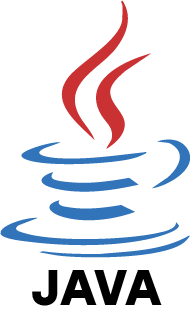
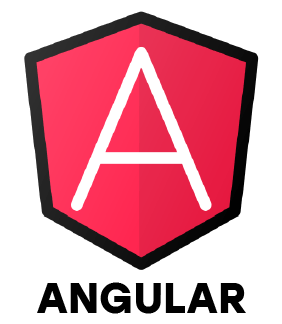

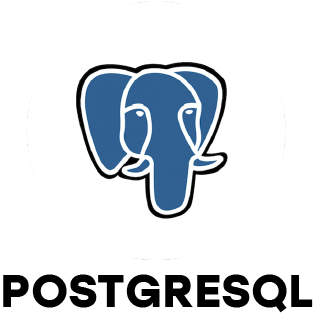

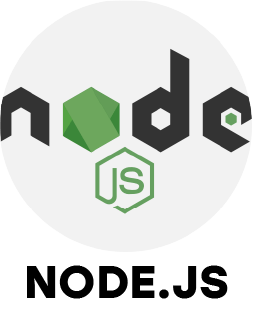
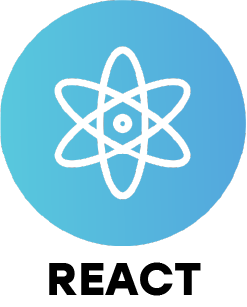
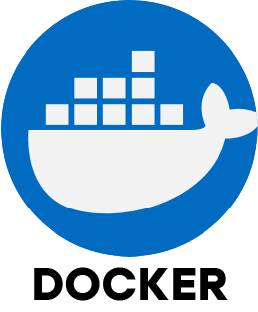
What’s included ?

📊 Free Aptitude and Technical Skills Training
- Learn basic maths and logical thinking to solve problems easily.
- Understand simple coding and technical concepts step by step.
- Get ready for exams and interviews with regular practice.

🛠️ Hands-On Projects
- Work on real-time projects to apply what you learn.
- Build mini apps and tools daily to enhance your coding skills.
- Gain practical experience just like in real jobs.

🧠 AI Powered Self Interview Practice Portal
- Practice interview questions with instant AI feedback.
- Improve your answers by speaking and reviewing them.
- Build confidence with real-time mock interview sessions.

🎯 Interview Preparation For Freshers
- Practice company-based interview questions.
- Take online assessment tests to crack interviews
- Practice confidently with real-world interview and project-based questions.

🧪 LMS Online Learning Platform
- Explore expert trainer videos and documents to boost your learning.
- Study anytime with on-demand videos and detailed documents.
- Quickly find topics with organized learning materials.
Full Stack Course Syllabus in Coimbatore
- 🏫 Classroom Training
- 💻 Online Training
- 🚫 No Pre Request (Any Vertical)
- 🏭 Industrial Expert
Students who join the Full Stack Developer Course in Coimbatore can choose a specialized track that matches their interests and career goals in full stack development. This flexible learning path allows them to focus in-depth on areas like frontend, backend, or DevOps, while still gaining a well-rounded understanding of full stack technologies.
- Java Full Stack – Covers Java, Spring Boot, and Angular or React for robust enterprise-level applications.
- Python Full Stack – Includes Python with Django or Flask, plus essential front-end technologies.
- MEAN Stack – Focuses on MongoDB, Express.js, Angular, and Node.js for modern JavaScript-based development.
- MERN Stack – Offers training in MongoDB, Express.js, React, and Node.js for building dynamic single-page applications.
These are used to build the user interface:
- HTML5 – Structure of web pages
- CSS3 – Styling web pages
- JavaScript – Client-side scripting
- Bootstrap / Tailwind CSS – Responsive design frameworks
- React.js / Angular / Vue.js – JavaScript frameworks/libraries for building dynamic UIs
These handle business logic, data processing, and server communication:
- Node.js (with Express.js) – Popular for JavaScript-based backend
- Java (Spring Boot) – Enterprise-level applications
- Python (Django / Flask) – Simpler, powerful backends
- PHP (Laravel / Core PHP) – Common for small-to-mid web apps
- Ruby on Rails – Elegant and fast development
- .NET (C#) – Microsoft’s enterprise web stack
Used for storing and managing data:
- MongoDB Basics – Work with documents, collections and CRUD operations.
- Mongoose – Connect MongoDB with Node.js using schema-based models.
- Data Relationships – Create links between different types of data.
- Validation – Ensure only correct data is stored in the database.
- Database Indexing – Improve data search speed.
Used for code management and collaboration:
- Git – Version control
- GitHub / GitLab / Bitbucket – Code repositories
- Pull Requests– Collaborate on code with others and review changes
- Branch Management– Work on different parts of code without conflicts
- Basic CLI Commands– Use the terminal to manage repositories
For deploying and managing web applications:
- Docker – Containerization
- CI/CD Tools – Jenkins, GitHub Actions
- Web Servers – Apache, Nginx
- Cloud Platforms – AWS, Azure, Google Cloud
- Deployment – Heroku, Netlify, Vercel
Additional Tools
- RESTful APIs, GraphQL, JSON, AJAX
- Package managers like npm
- Build tools such as Webpack and Babel
- Testing frameworks like Jest
- Development environments like Visual Studio Code
Solve issues that happen during deployment.
- Introduction to Deployment: Understand the concept of hosting web apps.
- Netlify & Vercel: Host front-end apps with CI/CD support.
- Render & Railway: Deploy Node.js back-end apps easily.
- Environment Configuration: Set up ports, secrets and variables in hosting platforms.
- Domain Setup: Link your application to a custom domain.
🎁 Free Addon Programs
Aptitude, Spoken English
🎯 Our Placement Activities
Daily Task, Soft Skills, Projects, Group Discussions, Resume Preparation, Mock Interview
Build Hands-On Skills with Full Stack Projects
Project 1
Job Portal Platform
Develop a job portal using React, Node.js, and MongoDB. Features include job posting, candidate applications, resume upload, admin dashboard, and email notifications.
Project 2
Food Delivery Application
Build a food ordering app with React, Express, and PostgreSQL. Supports restaurant menus, cart, order tracking, payment integration, and user/admin dashboards.
Project 3
Online Learning Platform
Create a learning management system using MERN stack. Features include course catalog, video streaming, quizzes, user progress tracking, and secure login.
Project 4
Fitness Tracker App
Develop a web app to log workouts, track progress, and set fitness goals using React, Node.js, MongoDB, and chart libraries for data visualization.
Project 5
Travel Review Portal
Build a travel review site using React, Express, and MySQL. Users can post reviews, rate destinations, upload photos, and interact via comments and forums.
Placement Support Overview
Today's Top Job Openings for Full Stack Developers
Full Stack Java Developer
Company Code : JFD101
Coimbatore, Tamil Nadu
₹30,000 - ₹50,000 a month
Any Degree
Exp 0-2 yrs
MERN Stack Developer
Company Code : MSD202
Coimbatore, Tamil Nadu
₹25,000 - ₹40,000 a month
Any Degree
Exp 0-1yr
MEAN Stack Developer
Company Code : MSD303
Coimbatore, Tamil Nadu
₹22,000 - ₹40,000 a month
Any Degree
Exp 0-1 yrs
Front-End Full Stack Developer
Company Code : FEFD404
Coimbatore, Tamil Nadu
₹28,000 - ₹50,000 a month
Any Degree
Exp 0-3 yrs
Back-End Full Stack Developer
Company Code : BFBD505
Coimbatore, Tamil Nadu
₹30,000 - ₹50,000 a month
Any Degree
Exp 0-2 yrs
Python Full Stack Developer
Company Code : PFD606
Coimbatore, Tamil Nadu
₹35,000 - ₹60,000 a month
Any Degree
Exp 0-1 yr
.NET Full Stack Developer
Company Code : NFD707
Coimbatore, Tamil Nadu
₹40,000 - ₹70,000 a month
Any Degree
Exp 0-2 yrs
Cloud Full Stack Developer
Company Code : CFD808
Coimbatore, Tamil Nadu
₹45,000 - ₹80,000 a month
Any Degree
Exp 0-2 yr
Internship Highlights for Full Stack Developer
Real-Time Projects
- 1. Gain hands-on experience by working on live industry-based applications.
- 2. Understand real-world problem-solving through full stack development scenarios.
Skill Development Workshops
- 1. Participate in focused sessions on trending technologies and tools.
- 2. Learn directly from industry experts through guided practical exercises.
Employee Welfare
- 1. Enjoy benefits like health coverage, flexible hours, and wellness programs.
- 2. Companies prioritize mental well-being and work-life balance for all employees.
Mentorship & Peer Learning
- 1. Learn under experienced mentor guide your technical and career growth.
- 2. Collaborate with peers to enhance learning through code reviews and group projects.
Soft Skills & Career Readiness
- 1. Improve communication, teamwork, and time management skills.
- 2. Prepare for interviews and workplace dynamics with mock sessions and guidance.
Certification
- 1. Earn recognized credentials to validate your full stack development skills.
- 2. Boost your resume with course or project completion certificates from reputed platforms.
Sample Resume for Full Stack Developer (Fresher)
- 1. Simple and Neat Resume Format
– Use a clean layout with clear sections like summary, skills, education, and projects.
- 2. List of Technologies You Know
– Mention skills like HTML, CSS, JavaScript, React, Node.js, MongoDB, etc.
- 3. Real-Time Projects and Achievements
– Add 1–2 real-time projects with a short description and the tools used.
Top Full Stack Interview Questions and Answers (2025 Guide)
Ans:
Full Stack Development refers to the end-to-end development of web applications, covering both frontend (client-side) and backend (server-side) components. A full stack developer works across three key layers:
- Presentation layer
- Business logic layer
- Database layer.
Ans:
While all aspects of full-stack development are essential, one of the most critical skills is understanding how frontend and backend components integrate. A firm grasp of problem-solving, system design, and the ability to write clean, efficient code across both ends is vital for building seamless, scalable applications.
Ans:
Full Stack Developers use a wide range of tools, including:
- Frontend: HTML, CSS, JavaScript, React, Angular, or Vue.js
- Backend: Node.js, Express.js, Django, Spring Boot
- Databases: MySQL, MongoDB, PostgreSQL
- Version Control: Git, GitHub
- Others: Docker, Postman, VS Code, Webpack
Ans:
- Proficiency in HTML, CSS, and JavaScript
- Knowledge of frontend frameworks like React or Angular
- Backend programming using Node.js, Python, or Java
- Understanding of databases (SQL and NoSQL)
- Familiarity with APIs, version control (Git), and deployment tools
- Strong problem-solving and debugging abilities
Ans:
CORS (Cross-Origin Resource Sharing) is a security feature implemented by browsers that restricts web pages from making requests to a different domain than the one that served the web page. It ensures that only allowed domains can access specific resources, helping to prevent cross-site attacks.
Ans:
IoC is a design principle in which the control of object creation and dependency management is delegated to a framework or container. Instead of the application managing dependencies, the control is "inverted" and managed externally, promoting loose coupling and better testability.
Ans:
Dependency Injection is a design pattern where an object's dependencies are provided by an external entity rather than being created within the object itself. It's a standard implementation of Inversion of Control and helps in building modular and testable code.
Ans:
Polling is a technique used in web development where the client repeatedly requests data from the server at regular intervals. It's commonly used in situations where the server doesn't support pushing data to the client in real-time (e.g., without WebSockets).
Ans:
Continuous Integration is a development practice where developers frequently merge their code changes into a shared repository. Each Integration is automatically tested and validated using automated builds and tests, ensuring code quality and early detection of issues.
Ans:
Multithreading is a programming concept that allows multiple threads to run concurrently within a single process. It enables better performance and responsiveness by allowing various operations to execute simultaneously. In web development, multithreading can be used to efficiently handle concurrent user requests or perform background tasks.
Company-Specific Interview Questions from Top MNCs
1. What is Virtual DOM?
Ans:
A simplified version of the real DOM is called the Virtual DOM. Frameworks like React use it to enhance performance by first updating the virtual DOM, comparing it to its previous version using a "diffing" algorithm, and then applying only the necessary changes to the real DOM.
2. What is JSX?
Ans:
JSX, or JavaScript XML, is a syntax extension for JavaScript used in React. It allows developers to write HTML-like code within JavaScript, making it easier to describe user interfaces while embedding dynamic JavaScript expressions.
3. What is Full Stack Development?
Ans:
Full Stack Development refers to building both the frontend (client-side) and backend (server-side) of a web application, encompassing the complete development cycle from user interface to database management.
4. What are some essential tools for full stack developers?
Ans:
- Frontend: React, Angular, Vue.js
- Backend: Node.js, Express.js, Django
- Databases: MongoDB, MySQL, PostgreSQL
- Version Control: Git, GitHub
- DevOps & Deployment: Docker, Jenkins
5. What is Inversion of Control and Dependency Injection?
Ans:
- Inversion of Control (IoC): A design principle where control over object creation and program flow is transferred to a container or framework.
- Dependency Injection (DI): A technique that implements IoC by injecting dependencies into a class from the outside rather than having the class create them itself.
6. Explain Pair Programming:
Ans:
Pair programming is a collaborative software development technique where two developers work together at a single workstation. One writes code (the "driver") while the other reviews and guides (the "observer"). They frequently switch roles to enhance productivity and code quality.
7. What is Cross-Origin Resource Sharing (CORS)?
Ans:
CORS is a browser security feature that restricts web applications from requesting resources from a different domain unless the server explicitly allows it via specific HTTP headers.
8. What is Callback Hell?
Ans:
Callback Hell occurs when multiple nested callbacks are used in JavaScript, making the code difficult to read and manage. It often happens during complex asynchronous operations.
9. What is Full Stack Web Development?
Ans:
Full Stack Web Development is the practice of building both the frontend and backend parts of a web application. It includes designing the user interface, handling server logic, and managing databases.
10. What deployment tools are used in full stack web projects?
Ans:
- Editors & Version Control: VS Code, Git, GitHub
- Backend Stack: Node.js, Express.js, MongoDB, MySQL
- Frontend Stack: React, Angular, Vue.js
- Additional Tools: Docker, Postman, Jenkins
11.How to Handle Tight Deadlines in Projects?
Ans:
- Break the project into smaller tasks
- Prioritize critical components
- Communicate clearly with the team
- Use agile methodologies and track progress regularly
12. What languages are primarily used for front-end development?
Ans:
- HTML
- CSS
- JavaScript
13. How to Add CSS to HTML?
Ans:
- Inline
- Internal
- External
14. How to Add JavaScript Externally?
Ans:
- Create a separate JavaScript file with a .js extension
- Write your JavaScript code in that file
- Link the file in your HTML using a script tag with the src attribute
- Place the script tag before the closing body tag for better performance
15. What is PHP?
Ans:
PHP stands for Hypertext Preprocessor. It is a server-side scripting language used to build dynamic web pages and connect with databases.
1. What is the difference between (div) and (span)?
Ans:
The term div refers to a block-level element used to group larger sections of content. It typically takes up the full width of its container and starts on a new line. On the other hand, span is an inline element, ideal for grouping smaller portions of text or content within a line without disrupting the text flow.
2. What is useMemo?
Ans:
useMemo is a React hook that helps improve performance by remembering the result of a function. It avoids unnecessary recalculations during re-renders unless its inputs or dependencies have changed.
3. What are the main advantages of using React for web development?
Ans:
-
Advantages:
- Encourages reusable, modular components
- Enhances performance using the virtual DOM
- Supported by a strong and active developer community Disadvantages:
- JSX syntax can be unfamiliar and harder to learn for beginners
- The ecosystem evolves quickly, which may lead to confusion due to frequent changes and updates
- Search engine optimization can be a challenge without server-side rendering
4. What do you use for JavaScript styling?
Ans:
You can apply styles using various approaches such as CSS-in-JS libraries like Styled Components and Emotion, inline styling directly within components, importing traditional CSS or SCSS files, or using utility-first frameworks like Tailwind CSS.
5. What is Event Bubbling and Capturing?
Ans:
- Event bubbling occurs when an event is triggered on an element and then moves upward through its parent elements.
- Event capturing starts at the outermost parent and proceeds down to the target element where the event is executed.
6. How can you prevent a bot from scraping a publicly accessible API?
Ans:
- Set rate limits to restrict the number of requests
- Use API keys and authentication to control access
- Add CAPTCHA for human verification on user-facing interfaces
- Monitor traffic for unusual patterns or abuse
- Restrict origins with CORS settings
- Use web application firewalls to filter harmful traffic
7. What is a RESTful API?
Ans:
A RESTful API follows the principles of Representational State Transfer. It utilizes standard HTTP methods, such as GET, POST, PUT, and DELETE, for communication between the client and server. A unique URL identifies each resource, and calls are stateless, meaning each request contains all the information needed to complete it.
8. What is the difference between “resetting” and “normalizing” CSS?
Ans:
- Resetting CSS removes all default browser styling entirely, creating a blank slate for design.
- Normalizing CSS aims to make default styles consistent across different browsers while preserving useful browser defaults where appropriate.
9. What is async/await?
Ans:
Async and await are used to handle asynchronous operations more cleanly and efficiently. They enable developers to write asynchronous code in a manner that appears synchronous, making it easier to read and manage compared to traditional promise chains.
10. Can we use multiple inheritance in Java? Explain.
Ans:
Multiple inheritance through classes is not supported by Java in order to prevent ambiguity and conflicts, like the diamond problem. Java does, however, permit multiple inheritance via interfaces. A class can implement multiple interfaces that define method signatures without offering their implementation.
1. Which language is most preferred by full-stack developers?
Ans:
JavaScript is the most widely used language by full-stack developers because it can be used for both frontend and backend development. On the frontend, it works with frameworks like React and Angular, and on the backend, it powers servers through platforms like Node.js. Other commonly used languages include Python, Java, and TypeScript.
2. What is long polling in web development?
Ans:
Long polling is a technique used to achieve near real-time communication between the client and server. After a request is sent, the client waits until the server has new data before responding. Once a response is received, the client sends another request, maintaining continuous communication.
3. What is Continuous Integration (CI)?
Ans:
Developers often integrate code changes into a shared repository as part of the continuous integration development process. To find problems early in the development process, CI systems like Jenkins, GitHub Actions, or GitLab CI are used to automatically build and test each integration.
4. What is the purpose of using use strict in JavaScript?
Ans:
- Prevents accidental global variables
- Throws errors on silent failures
- Makes code more secure and optimized
- Not supported in older browsers
- Can break legacy code
- Restricts use of certain features
5. What is Docker used for in software development?
Ans:
- Ensures consistency across development, testing, and production environments.
- Simplifies deployment by creating isolated environments for applications.
- Allows multiple services to run together using tools like Docker Compose.
- Improves scalability and portability.
- Helps maintain version control for application environments.
6. Explain Event Loop in Node.js:
Ans:
Node.js uses a single-threaded event loop to handle asynchronous operations. It pushes tasks to the event loop queue and processes them one by one, allowing non-blocking I/O without creating multiple threads.
7. Which tools help in analyzing and improving web app performance?
Ans:
- Minimize and compress CSS and JavaScript files.
- Load images only when needed using lazy loading.
- Use content delivery networks to serve static assets.
- Optimize database queries for faster responses.
- Implement browser and server-side caching.
- Write efficient code and choose lightweight frameworks.
8. Explain RESTful API and Usage.
Ans:
A RESTful API is based on REST architecture and allows interaction with resources using standard HTTP methods such as GET, POST, PUT, and DELETE. A unique URL identifies each resource, and operations are stateless, making the API scalable and easy to maintain.
9. What are React Hooks? When to Use use Memo and use Callback?
Ans:
Hooks are functions that let you use React state and lifecycle features in functional components.
- useMemo: Use to memoize expensive computations
- useCallback: Use to memoize functions so they aren’t recreated on each render (especially in child components)
10. What are Angular lifecycle hooks?
Ans:
- ngOnInit() – Called once after component is initialized
- ngOnDestroy() – Called right before the component is removed
11. What are the main entities needed in an e-commerce database schema?
A normalized schema typically includes the following tables:
Ans:
- Users Table: user_id, name, email
- Products Table: product_id, name, price
- Orders Table: order_id, user_id, order_date
- Order_Items Table: order_id, product_id, quantity
- Ensure foreign keys link related data and avoid redundancy.
12. When to Use Indexing in MySQL?
Ans:
Indexing is beneficial when columns are frequently used in WHERE clauses, JOIN conditions, or sorting operations. Indexes help speed up query performance, especially for columns with high read frequency or unique values. Use the EXPLAIN keyword to assess the impact of indexes on query execution.
13. What is a transaction in MySQL?
Ans:
- Use transactions for grouped operations to ensure consistency and reliability.
- START TRANSACTION;
- UPDATE accounts SET balance = balance - 100 WHERE id = 1;
- UPDATE accounts SET balance = balance + 100 WHERE id = 2;
- COMMIT; -- or ROLLBACK if error
14. What is indexing in MongoDB?
Ans:
Indexes in MongoDB enhance query performance by enabling the database to locate data more efficiently. Types of indexes include:
- Single Field Index for one field
- Compound Index for multiple fields
- Multikey Index for arrays
- Text Index for full-text search
- Hashed Index used for sharded collections
1. What is a Full Stack Developer?
Ans:
A full stack developer is proficient in both frontend (client-side) and backend (server-side) technologies. They are capable of building complete web applications, covering everything from user interfaces to databases and server logic.
2. What front-end technologies should a full stack developer be familiar with?
Ans:
- Frontend: HTML, CSS, JavaScript, React, Angular and Vue
- Backend: Node.js, Express, Python, Java and PHP
- Databases: MongoDB, MySQL, PostgreSQL
- Tools: Git, Docker, npm/Yarn and Webpack
- DevOps: CI/CD tools and cloud platforms
3. What are the common HTTP methods used in web development?
Ans:
- GET: Retrieve data
- POST: Submit new data
- PUT: Update existing data
- DELETE: Remove data
- PATCH: Partially update data
4. What is middleware in the context of web applications?
Ans:
Middleware functions act as intermediaries in the request-response cycle. They handle operations such as authentication, request logging, error handling, and data preprocessing before generating the final response.
5. What is the Model-View-Controller (MVC) architecture?
Ans:
- Model: Manages data and business logic
- View: UI layer that displays data
- Controller: Handles input, updates model/view
6. Why do you need to manage state in React?
Ans:
- useState / useReducer for local component state
- Context API or Redux for global state
- React Query / SWR for async server state management
- useEffect for syncing side effects with state
7. What is the purpose of npm or Yarn in web development?
Ans:
- Install, manage and update project dependencies
- Handle package versions
- Enable script automation via package.json
8. How to Implement Authentication in Web Applications.
Ans:
- Frontend: Login forms and JWT/local storage
- Backend: Hashing passwords, issuing JWT or sessions
- Middleware: Protect routes and verify tokens
- Tools: Passport.js, Firebase Auth and Auth0
9. What is Responsive Design?
Ans:
Responsive design ensures a website adapts to various screen sizes and devices. This is achieved through the use of flexible layouts, relative units, and media queries, which enhance accessibility and user experience across desktops, tablets, and mobile devices.
10. What is CORS and How to Handle It?
Ans:
Cross-Origin Resource Sharing (CORS) is a browser security feature that restricts web pages from making requests to domains other than their own. It can be managed by configuring the server to allow specific domains using appropriate headers or through middleware solutions.
11. What does optimizing web application performance mean?
Ans:
- Compress and minify scripts and styles.
- Load images and components only when needed.
- Optimize backend logic and database queries.
- Use caching mechanisms and compression techniques.
- Deliver content via CDNs and optimize assets for optimal performance.
12. What is the Purpose of Version Control?
Ans:
Version control systems are used to:
- Track changes over time
- Collaborate with teams (e.g., GitHub)
- Roll back to previous versions
- Branching for features and bug fixes
13. What does it mean to deploy a web application?
Ans:
- Choose a hosting service (e.g., Vercel, Netlify, AWS, Heroku)
- Push code to Git repo
- Configure build scripts and environment variables
- Set up domain, HTTPS and monitoring
14. Describe the role of APIs in web development.
Ans:
APIs (Application Programming Interfaces) allow communication between different software systems. They provide access to external features or data, making it easier to integrate services into web applications.
15. How do you troubleshoot and debug issues in a web application?
Ans:
- Use console logs to monitor values and application flow.
- Inspect elements and network requests using browser developer tools.
- Implement error-handling mechanisms to effectively catch and diagnose issues.
1. What is a Bridge Router (Brouter)?
Ans:
A bridge router combines features of both a router and a bridge. It routes known protocols at the network layer and bridges unknown ones at the data link layer.
2. What is Exterior Gateway Protocol (EGP)?
Ans:
EGP is a routing protocol used to exchange routing information between different autonomous systems. Modern protocols, such as BGP, have largely replaced it.
3. What is Network Virtual Terminal (NVT)?
Ans:
NVT is a standardized interface used in Telnet sessions to ensure compatibility between different systems by converting input and output into a standard character format.
4. What is the Hamming Code?
Ans:
The Hamming Code is an error detection and correction method that utilizes parity bits to identify and correct single-bit errors in transmitted data, thereby enhancing the reliability of communication systems.
5. What is a Pseudo Terminal (PTY)?
Ans:
A pseudo terminal simulates a physical terminal, allowing programs like SSH or screen to interact with other processes as if they were connected to an actual terminal.
6. What is BufferedWriter? What are flush() and close() used for?
Ans:
BufferedWriter is used to write characters to a stream efficiently by buffering output. The flush method forces any buffered content to be written immediately, while close completes the write operation and releases system resources.
7. What is stored in Stack and Heap memory? How are they related?
Ans:
- Stack: Stores function calls, local variables and control flow.
- Heap: Stores dynamically allocated memory (objects, arrays).
8. Can static or private methods be overridden or overloaded in Java?
Ans:
- Static methods can be overloaded but not overridden, as they belong to the class rather than instances.
- Private methods cannot be overridden since they are not accessible to subclasses.
9. How Does Dynamic Loading Help Memory Efficiency?
Ans:
Dynamic loading enables classes or modules to be loaded only when needed during runtime, thereby reducing initial memory usage and enhancing performance in large applications.
10. What are proactive, retroactive, and simultaneous updates in DBMS?
Ans:
- Proactive Update: Data is updated in advance, before it's required.
- Retroactive Update: Data is updated after changes should have taken effect (historically).
- Simultaneous Update: Data is updated in real time with changes happening concurrently.
Disclaimer Note:
The details mentioned here are for supportive purposes only. There are no tie-ups or links with the corresponding PGs.
Ladies PG Accommodation
- Vedha Ladies Hostel : 73050 10332
- Prestige Living : 90034 56856
- Sri Thangam Ladies Hostel : 94434 79426
- Apple Ladies Hostel : 88838 40100
- Radha Ladies Hostel : 97503 36136
- Lovely Nest : 97888 66603
- Titanstay Elite Ladies Hostel : 63806 42930
- Bharath Jothi Ladies Hostel : 98430 12789
- LARA Ladies Hostel : 88074 97949
- Yazhini Ladies Hostel : 99425 82888
Peelamedu
Gandhipuram
Saravanampatti
Lakshmipuram
Kalapatti
Mens PG Accommodation
- Zolo Mayflower : 88845 18010
- Zolo Captive : 88845 18010
- Shanthi Mansion : 98422 99861
- Zolo Einstein : 88845 18010
- Whats Up Mens Home : 99422 21035
- The Executive Grande PG for Men : 95979 10995
- In men’s pg & hostel : 96268 33233
- SKY PG : 74116 50311
- Zolo Troy : 88845 18010
- Stanza Living Adana House : 80460 07419
Peelamedu
Gandhipuram
Saravanampatti
Lakshmipuram
Kalapatti
Top Full Stack Job Opportunities for Freshers
- 1. Junior Developer Jobs at Startups and IT Companies
- 2. Campus Placements and IT Service Jobs
- 3. Internship-to-Job Programs
- 4. Apply Through Job Portals
- 5. Skills That Help You Get Hired
Launch Your Career with Full Stack Training in Coimbatore
Why Full Stack is the Ultimate Career Choice
High Demand
Companies prefer multi-skilled professionals can handle entire project cycles.
Global Opportunities
Open doors to remote and international job markets.
High Salary
Enjoy competitive salaries and rapid career advancement.
Flexible Career Path
Explore roles such as developer, architect, freelancer, or entrepreneur.
Future-Proof Career
Stay relevant with skills that are consistently in demand in the evolving tech landscape.
Versatility Across Industries
Work in various domains like e-commerce, healthcare, finance, and more.
Career Support


Placement Assistance

Exclusive access to ACTE Job portal

Mock Interview Preparation

1 on 1 Career Mentoring Sessions

Career Oriented Sessions

Resume & LinkedIn Profile Building
Get Advanced Full Stack Developer Certification
You'll receive a certificate proving your industry readiness.Just complete your projects and pass the pre-placement assessment.This certification validates your skills and prepares you for real-world roles.
📜 Industry-Recognized Certification
Earn official, shareable certifications recognized by top companies — a powerful proof of your job-ready skills.
🚀 Get Discovered by Top Employers
Let recruiters come to you with your verified profile — focus on learning while we connect you to real opportunities.
💼 Real-World Project Experience
Work on real-world projects to sharpen your skills and build a portfolio that impresses employers instantly.

What certifications are offered in Full Stack Developer training?
- MEAN Stack Developer Certification
- MERN Stack Developer Certification
- Java Full Stack Developer Certification
- JavaScript Full Stack Developer Certification
- Angular Full-Stack Developer Certification
Does earning a Full Stack Developer certification guarantee a job?
While a certification validates your skills and helps you stand out to employers, landing a job also depends on your hands-on experience, problem-solving abilities, communication, and interview performance.
How long does it take to complete a Full Stack certification course?
Typically, courses last 3 to 6 months. Fast-track programs may finish in 2–3 months, while part-time or weekend classes can take longer. Duration varies based on learning pace and course format.
What are the benefits of Full stack developer Certification?
- Demonstrates your expertise in both frontend and backend technologies.
- Enhances your resume, making you more attractive to recruiters.
- Opens up opportunities for roles such as junior developer, web developer, and internships.
- Enables you to secure freelance projects or remote jobs worldwide.
- Provides practical experience through hands-on projects.
- Builds confidence to develop web applications independently.
How can I prepare effectively for the Full Stack certification exam?
- Practice coding regularly in JavaScript, HTML, CSS, React, Node.js, and more.
- Build mini-projects to apply what you've learned.
- Review key concepts using quizzes, notes, and flashcards to reinforce your understanding.
- Join online forums or study groups to clear your doubts.
- Take mock tests or complete assignments to simulate exam conditions.
- Work on real-time projects to gain confidence and hands-on experience.
Complete Your Course
A Downloadable Certificate in PDF Format, Immediately Available to You When You Complete Your CourseGet Certified
A Physical Version of Your Officially Branded and Security-Marked Certificate.Affordable Full Stack Course Fees in Coimbatore
Affordable, Quality Training for Freshers to Launch IT Careers & Land Top Placements.
Why Choose ACTE’s Full Stack Training in Coimbatore?
Feature
ACTE Technologies
Other Institutes
Affordable Fees
Competitive Pricing With Flexible Payment Options.
Higher Full Stack Developer Fees With Limited Payment Options.
Industry Experts
Well Experienced Trainer From a Relevant Field With Practical Full Stack Developer Training
Theoretical Class With Limited Practical
Updated Syllabus
Updated and Industry-relevant Full Stack Developer Course Curriculum With Hands-on Learning.
Outdated Curriculum With Limited Practical Training.
Hands-on projects
Real-world Full Stack Developer Projects With Live Case Studies and Collaboration With Companies.
Basic Projects With Limited Real-world Application.
Certification
Industry-recognized Full Stack Developer Certifications With Global Validity.
Basic Full Stack Developer Certifications With Limited Recognition.
Placement Support
Strong Placement Support With Tie-ups With Top Companies and Mock Interviews.
Basic Placement Support
Industry Partnerships
Strong Ties With Top Tech Companies for Internships and Placements
No Partnerships, Limited Opportunities
Batch Size
Small Batch Sizes for Personalized Attention.
Large Batch Sizes With Limited Individual Focus.
LMS Features
Lifetime Access Course video Materials in LMS, Online Interview Practice, upload resumes in Placement Portal.
No LMS Features or Perks.
Training Support
Dedicated Mentors, 24/7 Doubt Resolution, and Personalized Guidance.
Limited Mentor Support and No After-hours Assistance.
Full Stack Course FAQs
1. What are the requirements for becoming a Full Stack Developer?
2. Will I get a certificate once I've finished Full Stack Developer Training?
3. What technologies are covered in the Full Stack Developer Training?
The training covers backend and frontend technologies, such as:
- Frontend: HTML, CSS, JavaScript, React or Angular
- Backend: Node.js, Express.js
- Databases: MongoDB, MySQL
- Additional tools: Git, REST APIs, and deployment techniques
4. Are there real time projects included in the Full Stack Developer Training?
5. Do you provide resume-building support?
1. Who can become a Full Stack Developer Training?
2. Is a degree necessary to become a Full Stack Developer?
3. What skills should I have before joining a Full Stack Developer Training?
4. Do I need to know both the frontend and backend before joining a course?
1. What kind of placement support is provided after the Full Stack Developer Training?
2. Will I get access to real-time projects for my resume?
3. Can I apply for jobs in top IT companies after completing the course?
4. Is placement support available for freshers with no experience?
1. What certifications are offered in Full Stack Developer Certification?
- MERN Stack Developer Certification
- MEAN Stack Developer Certification
- Java Full Stack Developer Certification
- Python Full Stack Developer Certification
- Certified Web Developer by ACTE or other platforms
2. Does receiving certification as a Full Stack Developer guaranteed employment?
3. How long does it take to become certified as a Full Stack Developer?
4. What are the advantages of being certified as a full stack developer?
- Validates your skills in frontend and backend technologies.
- Enhances your resume and makes you more attractive to recruiters.
- Opens opportunities for junior developers, web developers, and internship roles.
- Enables you to secure freelance or remote jobs globally.
- Provides hands-on project experience.
- Builds your confidence to work independently on web applications.
5. How can I prepare effectively for the Full Stack Developer certification exam?
- Practice coding consistently in JavaScript, HTML, CSS, React, Node.js, and more.
- Build small projects to apply your knowledge and skills.
- Review key topics with quizzes, notes, and flashcards to reinforce your understanding.
- Participate in online forums or study groups to resolve doubts.
- Take mock tests or assignments to simulate exam conditions.
- Work on real-time projects to gain practical exposure and confidence.
1. Will I Get Support for Job Placement After the Course?
2. Why do fees differ between training centers?
3. Is the course reasonable priced for beginners?
4. Is the fee of the training the same in every city?
Recommended Job Courses
Find Full Stack Training in Chennai and Bangalore
- Full Stack developer Course in Thiruvanmiyur
- Full Stack developer Course in Velachery
- Full Stack developer Course in Anna Nagar
- Full Stack developer Course in Porur
- Full Stack developer Course in OMR
- Full Stack developer Course in BTM Layout
- Full Stack developer Course in Marathahalli
- Full Stack developer Course in Rajaji Nagar
- Full Stack developer Course in Jaya Nagar
- Full Stack developer Course in Kalyan Nagar